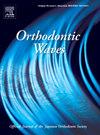治疗双颌前突的锚固方法和治疗效果:系统回顾和荟萃分析
IF 0.5
Q4 DENTISTRY, ORAL SURGERY & MEDICINE
引用次数: 2
摘要
摘要目的本系统综述旨在确定最有效的支抗方法,在治疗双颌前突时产生更好的骨骼、牙科、美学和患者体验结果。方法检索无语言限制的Pubmed、Medline、Scopus、Cochrane等电子数据库。在clinicaltrials.gov网站上搜索了未发表的研究。搜索词包括双颌前伸,双颌牙槽突,双颌前突,双颌前突,双颌前突和双颌。纳入双颌前突患者的治疗研究。根据Cochrane指南评估相关文章的质量,并提取数据进行统计分析。两位作者使用预定义的表格评估纳入研究的资格,并讨论任何分歧。采用Cochrane偏倚风险工具进行质量评价,采用GRADE评价证据质量。结果4项研究符合纳入标准,32项研究因研究设计和/或无相关结果报道而被排除。随机效应荟萃分析中只纳入了三项研究。有证据表明,使用TADs导致的锚固损失比传统锚固技术少(平均差2.38 mm;95% CI,−3.89 ~−0.88;P = 0.002)。使用TADs治疗时间差异有统计学意义(平均差异0.92个月;95% CI为- 1.64 ~ - 0.21;P = 0.01)。结论TADs在治疗双颌前突的正畸治疗中具有较好的支抗和较短的治疗时间,证据质量很低。本文章由计算机程序翻译,如有差异,请以英文原文为准。
Anchorage methods and treatment outcomes in the treatment of bimaxillary protrusion: a systematic review and meta-analysis
ABSTRACT Aim This systematic review aimed to identify the most effective anchorage methods producing better skeletal, dental, aesthetic and patient experience outcomes in the treatment of bimaxillary protrusion. Methods Electronic databases (Pubmed, Medline, Scopus, and Cochrane library) were searched without language restrictions. Unpublished studies were searched for on clinicaltrials.gov. Search terms included bimaxillary proclination, bimaxillary dentoalveolar protrusion, biprotrusion, bimaxillary prognathism, bimaxillary protrusion, and bidental. Treatment studies on patients with bimaxillary protrusion were included. Relevant articles were assessed for quality according to Cochrane guidelines and the data extracted for statistical analysis. Using predefined forms two authors assessed eligibility for inclusion in the study and any disagreement was discussed. Cochrane Risk of Bias tool was used for quality assessment and GRADE was used to assess the quality of the evidence. Results Four studies met the inclusion criteria, while 32 were excluded based on study design and/or no outcome of interest reported. Only three studies were included in the random-effects meta-analysis. There was some evidence to suggest that the use of TADs resulted in less anchorage loss than traditional anchorage techniques (mean difference 2.38 mm; 95% CI, −3.89 to −0.88; P = 0.002). There was a significant difference in treatment duration with use of TADs (mean difference 0.92 months; 95% CI −1.64 to- 0.21; P = 0.01). Conclusion There is very low-quality evidence to suggest TADs provide better anchorage and shorter treatment duration in the orthodontic treatment of bimaxillary protrusion.
求助全文
通过发布文献求助,成功后即可免费获取论文全文。
去求助
来源期刊

Orthodontic Waves
DENTISTRY, ORAL SURGERY & MEDICINE-
CiteScore
0.40
自引率
0.00%
发文量
0
期刊介绍:
Orthodontic Waves is the official publication of the Japanese Orthodontic Society. The aim of this journal is to foster the advancement of orthodontic research and practice. The journal seeks to publish original articles (i) definitive reports of wide interest to the orthodontic community, (ii) Case Reports and (iii) Short Communications. Research papers stand on the scientific basis of orthodontics. Clinical topics covered include all techniques and approaches to treatment planning. All submissions are subject to peer review.
 求助内容:
求助内容: 应助结果提醒方式:
应助结果提醒方式:


